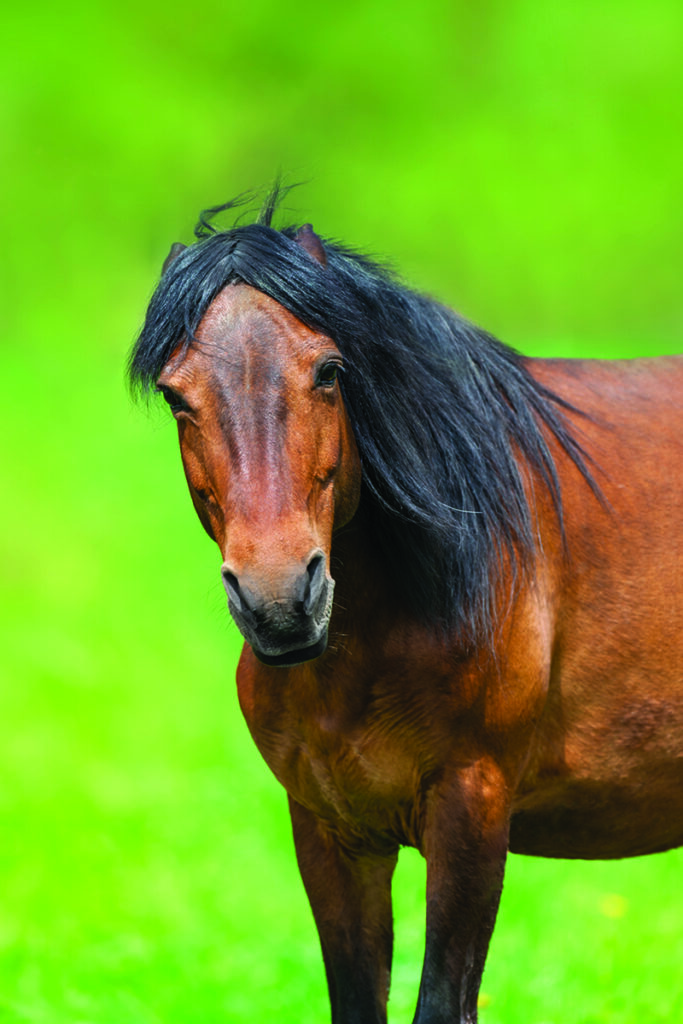By the time I arrived at the showgrounds with my mare, Sally, I had left nothing to chance. I was confident that we would put in solid performances on our hunter rounds. What happened next surprised me; her erratic behavior during our warm-up rattled my show nerves to the core.

Although mares are known for their heart and have proven that they can compete at the highest levels of any sport, social media posts abound reflecting the sometimes-impossible behavior of this often-maligned gender. Lew Strickland, DVM, M.S., Dipl. ACT, uses his specialty in theriogenology and years of experience with the University of Tennessee’s Extension Service and College of Veterinary Medicine to provide insight into the sometimes-frustrating experiences of mare ownership.
Common Mare Concerns
Common complaints by mare owners include that their mounts have trouble focusing, irritability, and changes in their consistency and performance during their heat cycle.
“The biggest complaint we hear is when the owner is trying to take their mare to a show or other important riding performance [when she is in heat], and the mare has some back soreness, causing her to be unable to perform,” says Strickland.
While bad behavior due to pain or soreness caused by estrus is understandable, it’s important to be able to rule out other possible causes of the poor behavior. Ovarian tumors, urinary tract infections, bladder infections, urinary calculi, lameness, joint pain, an abscess, or a bruised hoof could be the source of discomfort.
A physical exam performed by a veterinarian can help determine if the root cause of the pain comes from estrus or another issue with similar clinical signs, such as the ones mentioned above. As with any horse, the fit of her tack should also be investigated.
“Otherwise, you’ll have to go back and do a little investigative work to see what she was doing 21 days ago,” says Strickland. “That’s the length of her estrous cycle, so you have to see if she was acting up and whether or not a pattern has developed. An accurate history can also help to tell you if the pain is from something else. For example, did it show up at the same time as a new saddle?”
Strickland says that excellent records are key when mapping the mare’s estrous cycle. Physical signs of estrus include squatting, urinating, squealing, and vulvar “winking,” especially in the presence of other horses.
“You need to understand exactly when her cycles start and how long they are,” he says. “Not all of them are exactly 21 days. There’s a range of about five to seven days. One mare may be shorter and another goes over a week.”
Drug Therapies
Once you’ve determined that your mare’s estrous cycle is the cause of her behavior issues, there are several options that you can try.
The main one is progesterone supplementation, such as altrenogest (Regu-Mate) in the feed, but that can get a little pricey after a while.
“Though some studies have shown that it doesn’t work reliably well, Depo-Provera shots are another option,” adds Strickland.
While the brand name Depo-Provera has never been approved for use in horses, the drug itself, medroxyprogesterone acetate (MPA), can be obtained through a compounding pharmacy when prescribed by a veterinarian. However, this treatment has been banned by the U.S. Equestrian Federation (USEF) and cannot be used in mares competing in USEF-sanctioned competitions.
An alternative to MPA is oxytocin injections. A chief disadvantage to its use is the frequent injections required over a specified time period. As with any medication, it is important to discuss the costs—both physical and monetary—versus the benefits with your veterinarian.
Physical Measures
A more invasive measure would be to have a veterinarian give the mare an ovariectomy (surgical removal of both ovaries).
“This option would be for someone who never wants to breed their mare,” says Strickland. “You walk a fine line here, because taking the ovaries out will take away soreness from the estrogen when the follicles are building up, but it might not take away her receptivity,” meaning her interest in stallions or showing other signs of heat.
Intrauterine devices (IUDs) are a less drastic option than an ovariectomy and can still prove to be a good choice, especially if you prefer that your mare maintain reproductive functions.
“An IUD is an object that is placed into the mare’s uterus that makes her brain believe she is pregnant,” Strickland says. The length of effectiveness for an IUD varies from six months to two years, but they can always be replaced.
The IUDs themselves can be a large marble or even magnets. Undesirable side effects with marbles include the possibility of uterine infection and inflammation of the uterine lining. It is for these reasons that it’s recommended that they be removed after one year.
When considering an IUD, it’s important to have a preparatory discussion with your veterinarian. In addition to being the only person qualified to complete the procedure, he or she can recommend the best product for your situation.
Because they can be inserted in the field, IUDs are the most economical of the two procedures. However, ovariectomies may still fit a mare owner’s budget.
The bottom line is that the criticized behavior of some mares is often undeserved. With a little study into the possible causes of behavior issues, and a discussion with your veterinarian on the best way to manage her estrous cycle and signs of estrus, your mare may become as reliable as your favorite gelding.
This article about the bad behavior in mares originally appeared in the September 2021 issue of Horse Illustrated magazine. Click here to subscribe!





